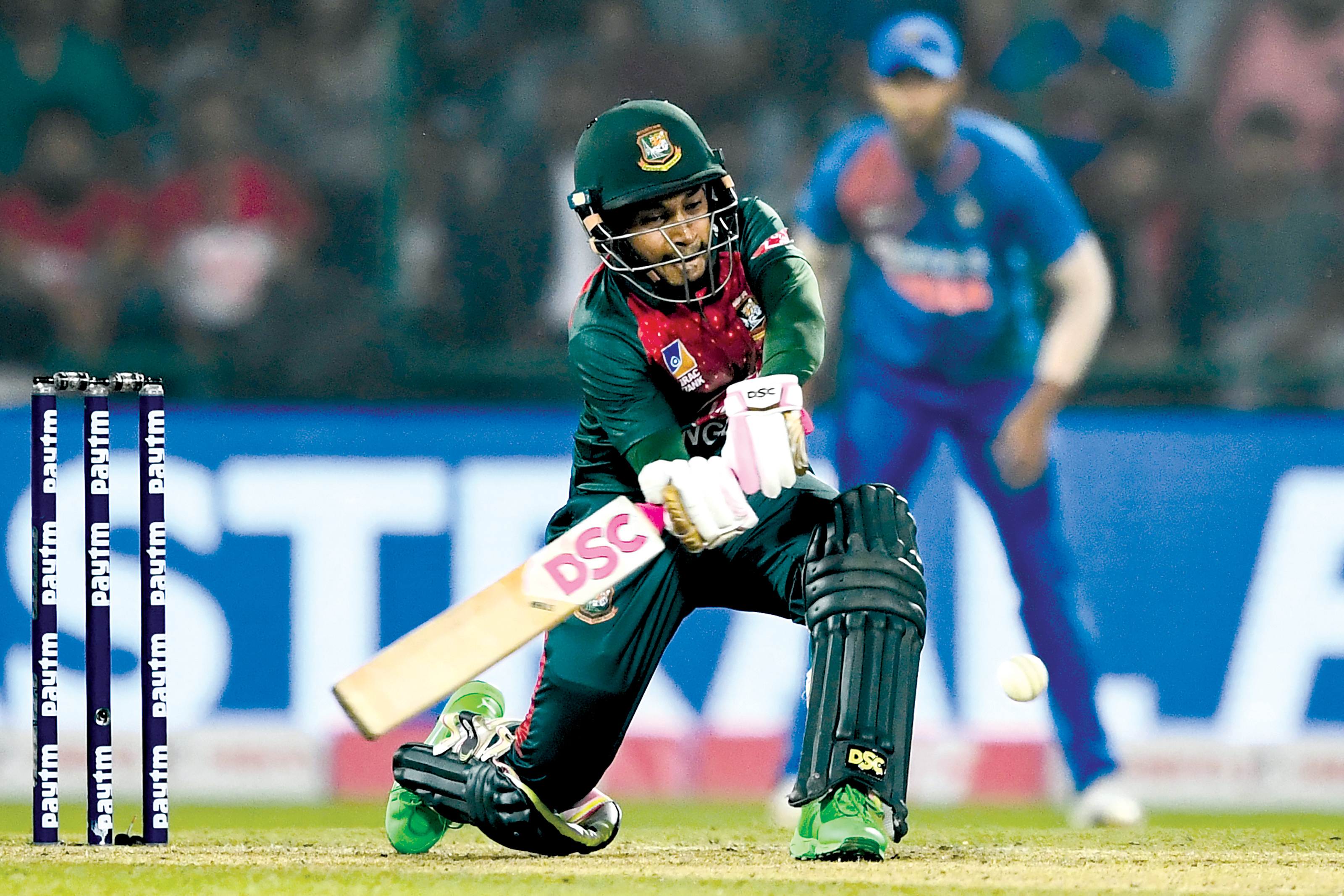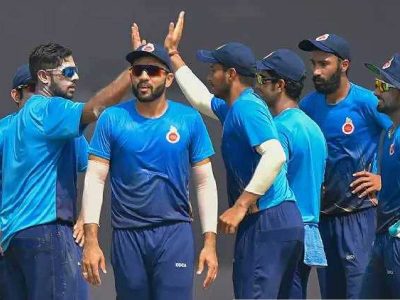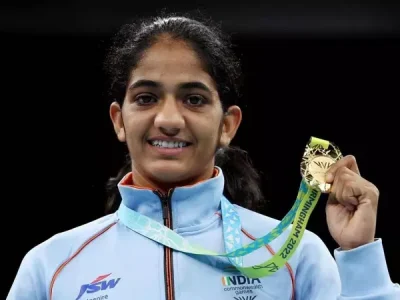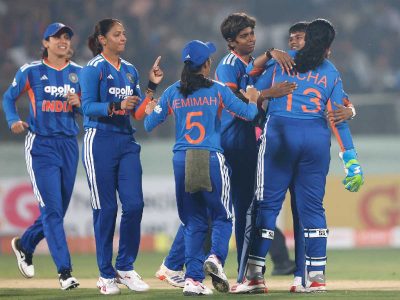IPL made T20 one of the most popular formats of cricket. India, ironically, is struggling to register the first-ever defeat from Bangladesh in a T20 match
A major upset in a cricket field sets tongues wagging, a celebrity sports person becomes the butt of a joke. Castigating players is apparently a way to come to terms with defeat, read humiliation.
Earlier this week, in a T-20 match, India was humbled by a spirited Bangladeshi team at the Arun Jaitley Stadium in Delhi. The smoggy day cast a shadow on Indian cricket. The celebrated Indian lineup was no match for a committed team of ‘minnows’. That’s not the kind of beginning former India captain Sourav Ganguly was hoping for at the beginning of his tenure as chief of the Board of Control for Cricket in India (BCCI).
India is a power to reckon with in the world of cricket. They are the leader in the five-day format or the test cricket after humbling New Zealand 3-0 on the home turf recently. In one-day internationals or ODI, India is only second to England by a slim margin. But in the T20 format, India holds the fifth position with Pakistan sitting at the top of the charts.
This defeat in the hands of Bangladesh was like rubbing salt into the wound. T20 format is India’s gift to the world of cricket. BCCI revolutionised T20 by introducing the Indian Premier League (IPL), making the sport a cash-minting machine. IPL became the most favoured destination for top players of the world, and also helped encourage inhouse talent, by exposing them to world-class cricket. But when the results fail to meet the potential, it is worrisome, to say the least.
Even a legend like Sunil Gavaskar, one of India’s best Test batsmen, agrees that T20 has played a major role in popularising cricket and pulling back the crowds. Test cricket — the five-day format — in this fast-paced world, had lost much of its appeal. “Thanks to T20, more people are watching the game now. We must be thankful to T20 actually. The connoisseur might argue that the cricket standard is not the same, but as far as I am concerned, the game has become more attractive,” Gavaskar said in an interview with Sportstar.
Test matches are the ultimate yardstick of a player’s fortitude, where both the batsman and ballers get adequate opportunity to exhibit their resilience. T20, in contrast, is more like fireworks, where the action is the prime attraction. The idea is to go out and play shots, get ballistic, it’s a rat race for runs. And, therefore, on a good day, even a team with lesser potential and skill is likely to win the game if they do well for four or five overs: some deft bowling, batting and good luck.
This is what happened when Bangladesh’s Mushifqur Rahim and Soumya Sarkar played like champs exhibiting character and grit, registering their first-ever T20 victory over Indian on the latter’s home turf.
There is the little scope of error in the T20 format of cricket. There’s a lot of disappointment in the ranks after the defeat and fans are quick to judge. Krunal Pandya and Khaleel Ahmad are being trolled on social networking sites for dropping a catch and bowling an expensive over, which turned the tides against India in the match. Bangladesh didn’t win the match, India lost it — there’s a subtle difference — fans complain.
There is also chatter about India giving in in the high-pressure games — they have not been good at finishing the match, in giving the final blow to claim the match. That reflects on the players’ seriousness, commitment and match fitness.
There has been a lot of experimentation lately by the Indian skipper, Virat Kohli, in order to “take the toss out of the equation”. In September, Kohli made a bold move that surprised many and backfired. In Bengaluru, he decided to bat first after winning the toss against South Africa in the pitch that’s known to favour the chasing teams.
Kohli explained that he is looking for the best combination, that requires a bit of experimentation and risk-taking. “I think as a team if we are willing to get out of our comfort zone a lot more, then we will be unfazed with what happens at the toss. That’s our basis idea: trying to take the toss out of the equation as a side,” he told reporters after the match.
This only indicates that Indian is struggling to put the best combination in place. The immediate circumstances and the ground reality — like the weather, moisture, etc. –demand a certain flexibility. Many fans wonder how can there be ‘one’ best combination for ‘all’ circumstances?
Virat Kohli is a thinking captain who leads from the front, and there will be occasions when things will not work out. (though Rohit Sharma was the captain in the Bangladesh match). But there shouldn’t be any despondency, fans argue.
India is a big challenger and a team no one can take for granted. It’s not without a reason that the former Australia wicket-keeper and batsman, Adam Gilchrist, is reported to have said that India is one of his favourites to lift the ICC T20 World Cup to be held in Australia next year.
Apart from India, England, Australia are his other favorites to win the contest. “I can’t predict who is going to win but I suspect that the usual suspects like India, England, Australia and New Zealand will probably make the long way, semi-finals of course,” Gilchrist was quoted saying.
T20 format and IPL’s contribution to Indian domestic cricket has been phenomenal. IPL has made cricketers rich from all parts of the world. Initially, there were issues that domestic cricketers were getting a raw deal in the IPL.
But this changed in the last few years after the intervention of the BCCI. IPL has revolutionised the money domestic players can earn by the cascading effect.
All domestic players aspire to be part of the IPL. Due to the limited number of places, the best of domestic cricketers don’t find a place. For many of the good players don’t have the T20 temperament, they are not big hitters of the cricket ball. The BCCI, in order to encourage domestic players, who might not be best suited for T20, and share the profits of IPL with the players, raised the annual retainer for contracted players in a big way. Players like Cheteshwar Pujara and Ishant Sharma are world class batsmen in the larger format of the cricket but may not be the best IPL contract winners.
Talk to young players practising at various clubs in Delhi and they’d tell you that cricket has immensely benefited from IPL. It has had a profound effect on the fitness level of players, skipper Kohli leading the way. Also, players are stronger mentally and their approach to the game is far more assertive and positive. The standard of coaches and support staff has all drastically improved thanks to IPL and T20 format.
“There are a lot of T20s and Tests before the T20 World Cup next year and we are pushing youngsters into the system at every possible chance because it is important to finalise on a system. This also gives you an idea as to who are the players who can take the philosophy of the team forward. The focus is on selecting players that can take the team vision forward and maintain it,” Kohli said in an interview shared by BCCI.tv.
“We are clear about the fact that youngsters must take their chances. When I broke into the team, I did not get 15 chances; you get five maybe and you have to take it because that’s the level we are playing at. So those coming into the team must have that mental make-up,” Kohli explained in an interview, adding, “I knew in my head that I have to make the most of three or four chances. I never thought that I would get so many chances to ease into the team.”
Team India is trying to focus on the larger picture and these setbacks will not deter them from the objective of putting a big challenge in the T20 World Cup next year. No doubt, results are important but as per the coach, Ravi Shastri, the focus will remain on grooming players for the shortest format of the game.
“It is nice when you play many teams. What will help is the hard yards you’ve put in last year. Living out of a suitcase in India and outside is like chalk and cheese. We were out for more than 200 days and that experience of playing many teams will come in handy. At home you’re familiar with the conditions, but those opponents will be back and the experience will count,” Shastri reportedly said in an interview to BCCI.tv.
A setback is an eyeopener. It tells you complacency leads to defeat from even a fairly docile team on the home turf. A team is as good as it played the last match.





